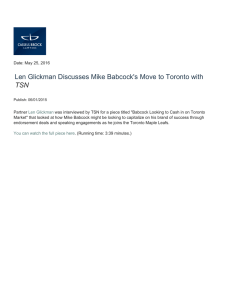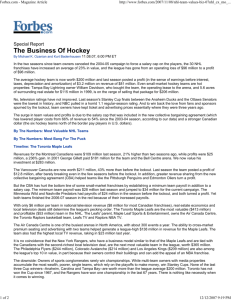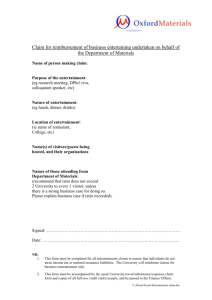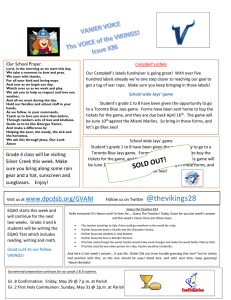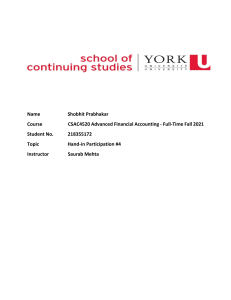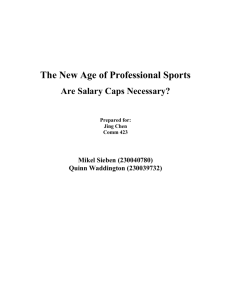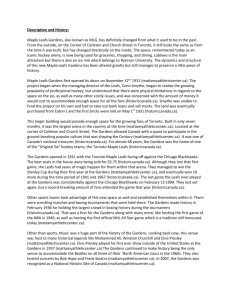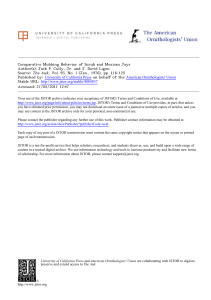Worksheet 07 - Product Life Cycle (Sports and
advertisement
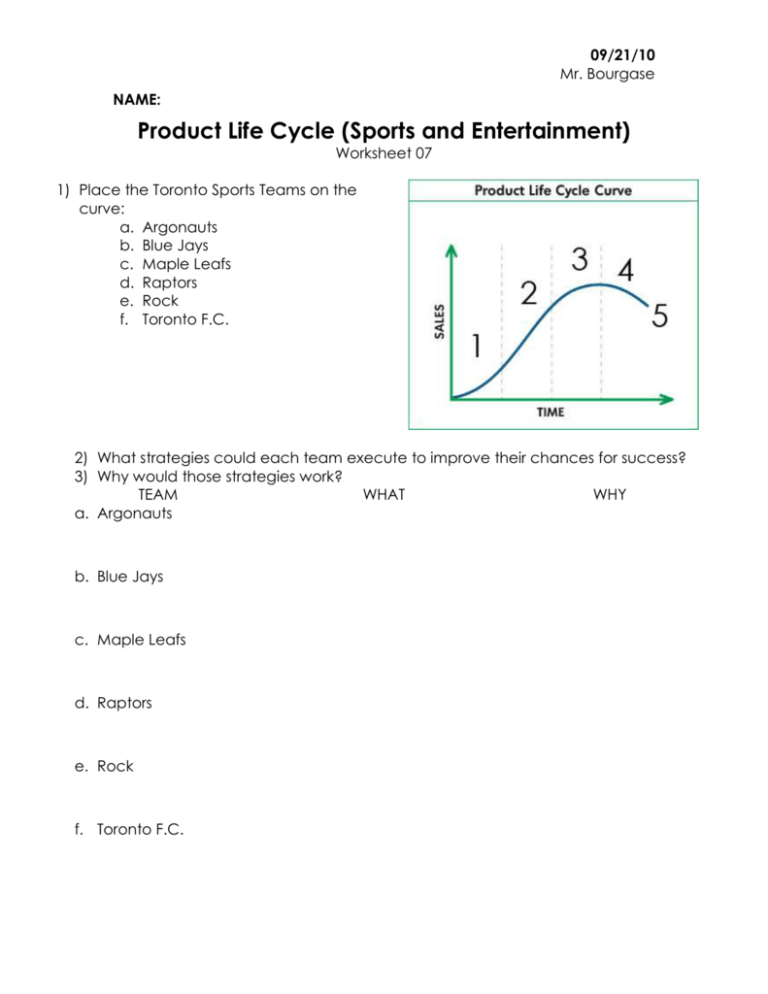
09/21/10 Mr. Bourgase NAME: Product Life Cycle (Sports and Entertainment) Worksheet 07 1) Place the Toronto Sports Teams on the curve: a. Argonauts b. Blue Jays c. Maple Leafs d. Raptors e. Rock f. Toronto F.C. 2) What strategies could each team execute to improve their chances for success? 3) Why would those strategies work? TEAM WHAT WHY a. Argonauts b. Blue Jays c. Maple Leafs d. Raptors e. Rock f. Toronto F.C. Product Life Cycle (Sports and Entertainment) Worksheet 07 Entertainment Product Life Cycle by Multimedia Marketing Knowledge Centre http://www.multimediamarketing.com/mkc/productlifecycle/ One of the most common concepts referred to in marketing is the product life cycle. Whether it is candles, horseshoes, hair nets or Harrier jets - products have life cycles. That means they all have a beginning… and an end. Political, economic, social and technological changes affect product life cycles. The time frame can vary according to the industry but the pattern remains the same: slow sales growth, rapid sales growth, mature sales, and falling sales, as the product is launched, grows rapidly, matures and eventually declines. Perhaps a little simplistic but nevertheless it can provide a useful insight into a common pattern of total industry sales which the marketer must recognize. Businesses, like steam engine manufacturers refused to see the end of their product's life cycle. They went out of business. They did not acknowledge the inevitable end of their product's life cycle. Although candles and horseshoes still exist today, their sales have peaked long ago and are now minuscule compared to the vast volumes which were sold during previous centuries. Vinyl records and turntables have a shorter life cycle. Black and white TV had a relatively short cycle which was extended by colour TV which is now near its decline stage as multimedia on-line PC/TVs emerge. The marketing mix varies during each stage of the product life cycle. A product's life cycle can be extended by finding new users, new uses, increased usage and of course, product modification. New users mean new target markets. New uses for a product mean that new benefits and new ways of using the product have to be found. Increased usage is simply trying to get customers to increase their quantity and frequency of use. Extended or not, the Product Life Cycle is usually applied more easily to product form rather than product class or specific brands. For example, a product form such as black and white TV has a clearer life cycle than televisions in total which is a product class Different products and whole industries have different time horizons, for example the horseshoe's life cycle has had hundreds of years while TV may have perhaps only 70. The danger of over-dependence on the life cycle means that a temporary dip in sales could trigger a premature withdrawal of a product - if the dip is misinterpreted as the final decline of the product. Peter Doyle, in the linker, explains his dislike for the concept. Finally, the life cycle is more descriptive than predictive. It describes the behaviour or sales pattern of a product as opposed to predicting its future sales precisely. Despite this limitation , the steam engine companies might just have survived in some manner or form if they'd been aware of where they were on the Product Life Cycle and its fatal finality.

